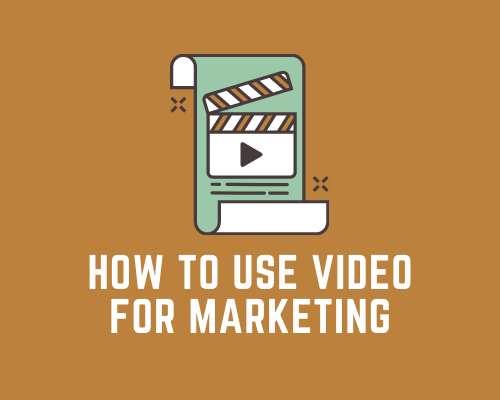
Video is a highly effective way for marketing a business because of engagement.
Think about this – if someone asked you to read a 5 min article or watch a 5 min video, what would most people pick? With people watching more than 100 minutes of video every day, they are more likely to pick the 5 min video. Video is perfect for invoking emotion, explaining something quickly and effectively and showing different aspects of your product. And 80% of the marketers confirmed that video helps increase sales. In this post, I will discuss how you can use video for your marketing.
Types of videos
Whether you are a B2B company or B2C, the right video marketing strategy can help you grow your business. A series of videos are as powerful as a blog to attract customers through inbound organic marketing.
The most common type of videos are:
- Explainer video – These videos are short, marketing videos that explain a product or company. A business can explain the key features of their product in an engaging manner using animation. This will help users to understand your product and make a decision about it. Here is an example from Google Voice to explain their product. A common tool to create these videos is Doodly, through which you can make animated videos easily.
- Product demo – A product demo video is a longer video which explains the product in greater detail. You can show how the product works by showing it in action. For a software product, the demo could consist of a screen recording of the different aspects of the software. For a physical product, the demo could show the product being used in different situations. Here is a video by Asana which explains the various features of their software product in great detail.
- How-to – How-to videos are created to explain specific use cases of the product. It’s a great idea to create how-to videos based on the common questions your customers may have about your products. This video by Dyson shows how to get the best out of their humidifying purifying fan.
- Testimonials – Customer testimonials are a great way to build trust in your brand. These videos feature real people who have used your product and talk about the difference it made to their life. Here’s a customer testimonial video that I made which features feedback from people who attended my workshop.
You are not just limited to creating these videos. Apart from these videos, you can experiment with ad-hoc videos that give a peek behind-the-scenes, focus on employees (or yourself), story behind your business, promo videos or just fun videos that relate to your brand.
Social media videos
Social media plays an important role in your experimentation with video. While most videos live on YouTube, social media videos have a place of their own in marketing. As I mentioned in my last post, social media platforms discourage external links. It would not help for you to post your YouTube video link to your social media profiles. Instead, you can do one of these things:
- Create bite-sized videos from the original videos – Short, snappy videos work best on social media. People want to scroll over to the next update quickly, so keep your social media videos short. And if you are posting on different platforms, know the video length of each platform. Facebook allows videos of 240 min length, while Instagram allows 3-120 secs for feed, 15 secs for story, 30 sec for Reels and 10 mins for IGTV videos. You can easily create shorter version of your videos for social media by editing the original video and adding a CTA to watch the full video. This will entice your followers to watch more of the video on your YouTube channel. Tools like Adobe Spark, Adobe Premier Rush, Animoto and Kapwing have great editing tools for you to use.
- Use native video tools – The second option is to create a native video for the platform. A testimonial video that has been made through a candid phone recording, can be as powerful as a professionally edited video. Most social media platforms allow you to create engaging videos that connect with your audience. The stories feature in all social media platforms is a good example of this. You can upload a video recording in a story and overlay it with stickers, emojis etc to make it interesting.
- Create live videos – Live videos are gaining popularity on all social media platforms. It helps for businesses to put a face that people can relate to. Live videos can feature chats with other people, Q&A, product demos, cover an event and so much more. All live videos can then be saved onto the social media page for consumption later on by other followers.
- Turn your images into a video collage – If you do not have a video to start with, you can arrange you photos or images into a video montage. Animoto and Adobe Spark have templates that help you make a professional video out of the content you have. 1. You can add music, transitions, images and text to make an interesting video. These can be more engaging than image carousels.
For videos on social media, remember to keep them in portrait mode or 1:1 ratio. These are best for mobile phone viewing. In addition, many people watch social media videos on mute, so it is a good idea to add subtitles to your video.
The hardest part about a video marketing strategy is to create the content. So, experiment with video types to see what resonates with your audience. Once you have a good idea of what works, you can scale it up to create more content.
Want to learn more about digital marketing? Check out my course on Graphy.
Digital & Social Articles on Business 2 Community
(48)






